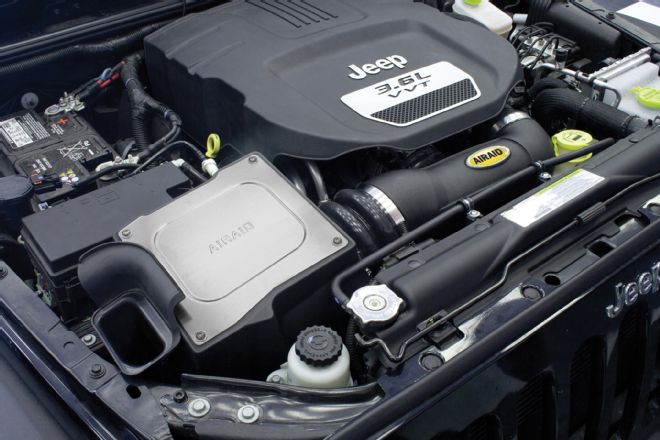
CAI: Truth or Fiction
I have a 2014 Jeep JK Sport, and I'm wondering what the truth is concerning the use of cold air intakes and throttle body spacers. I read all of the blogs concerning the use of them; 50 percent of the people say they work and 50 percent say they are useless. I also own a cruiser motorcycle and have installed an aftermarket air filter system that greatly improves the power of the vehicle. Since I notice an increase in power with my motorcycle, I figure that there has to be an improvement with my Jeep. Problem is I hear comments that the Jeep will have better performance initially but once the computer adapts to the increased airflow it adjusts back to factory settings and negates the use of the intake. Same for the throttle body spacer. What's your opinion? Do these two items really work and will I experience more power and a reduction of throttle lag after I jump on the gas to pull out? I'd like to think they work but am uncertain if I would just be wasting my money. My Jeep currently is 100 percent stock with no engine modifications or lift.
Damien Whitfield
Via nuts@4wheeloffroad.com
It has been proven time and again here in our pages and elsewhere that properly designed cold air intakes do help improve power. Maybe not always as much as the manufacturer claims, but they do consistently make power. But no matter how many tests are published by the aftermarket manufacturers, magazines, and independent shops, there are always a few keyboard commandos who say intakes don't work.
Here's the truth. An engine is a big air pump, so the easier it can inhale air and exhale exhaust, the better it runs. The problem is that open inlets and exhausts are noisy, and you don't want contaminated air entering an engine. To keep the noise down and filter the air, the OE manufacturers use a variety of baffles combined with a paper filter. The baffles hurt airflow, and the filter size is often limited by underhood packaging concerns. Aftermarket intakes work by removing these baffles and smoothing the path for air to reach the engine and combine this with an air filter that has good flow characteristics while maintaining the necessary filtration. How? They do it by using smooth intake plenums that optimize airflow and the location of the MAF sensor (if equipped), and by using a filter with a much larger surface area than the factory one. The lack of baffles is why aftermarket intakes typically have a reputation for being louder than a stock intake. Again, if more air has an easier path to the engine, the engine will run better. This is also why combining an intake with a free-flowing exhaust system is a good idea.
It's also not true that the computer negates any increase in airflow. Your Jeep is a speed density system and as such does not have a MAF sensor, but the same basic principle applies: More air in means more power. Most vehicles these days have a MAF sensor, and the sensor's position in the inlet tract is critical, which is why people should stick to reputable manufacturers and avoid the cheap no-name intakes you find from some online sources. With a properly engineered intake system, the MAF sensor receives the proper air signal for the amount of air coming into the engine and adjusts fuel trims, timing, and other functions accordingly. The same basic thing happens with a speed density system, just in a slightly different way.
As far as throttle body spacers go, they are proven performers in older carbureted applications, and the same principles apply to modern fuel-injected vehicles. The trouble is that the benefits can be harder to see on a dyno sheet for a late-model vehicle. The basic idea is that they help smooth turbulent airflow that passes by the throttle plate and help distribute air more evenly among all the cylinders. It has been my experience that they work better in some applications than others, but it really just depends on the factory intake design.
The bottom line is that cold air intakes wouldn't exist if they didn't work, so go for it.
One note specific to your JK: Avoid the open-style intakes that leave the filter unprotected from mud and water ingestion. More than a few JKs with open-element intakes have ended up hydrolocked after a quick run through a deep water crossing.